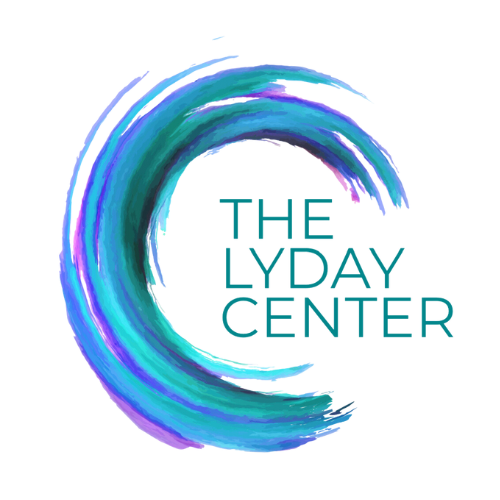DOC - WILL I BE ABLE TO HAVE A BABY?
Jane Doe - she’s come to the right place for true healing
Functional Medicine Case Study: Painful Periods in a 30-Year-Old Woman
Jane Doe walked into the clinic, her hands clasped tightly in her lap, her face a mixture of exhaustion and fear. "I’m afraid I’ll never be able to have children," she admitted, her voice cracking. Adopted at birth, she grew up knowing that her biological mother had suffered from severe fibroids, ultimately making pregnancy impossible. Now, at 30, she found herself battling excruciating period pain, worsening with each cycle. Doctors had dismissed her concerns, offering only birth control or painkillers. But deep inside, she knew something was wrong—something more than just 'bad periods.' She wanted answers, she wanted hope, and most of all, she wanted the chance to become a mother someday.
Patient Profile:
Name: Jane Doe (pseudonym)
Age: 30
Sex: Female
Occupation: Office Worker
Chief Complaint: Severe, cramping pelvic pain during menstruation, worsening over the last two years
Associated Symptoms: Fatigue, bloating, migraines around menses, brain fog, intermittent diarrhea, increased urinary frequency, occasional joint pain
Menstrual History: Cycles 28-32 days, lasts 5-7 days, moderate-to-heavy flow with clots
Medical History: Diagnosed with IBS, history of chronic sinus infections
Family History: Mother had endometriosis, father has autoimmune thyroid disease
Lifestyle: Sedentary job, moderate exercise 2-3x/week, diet includes processed foods, occasional alcohol
Environmental History: Works in an older building with potential mold exposure, lives in an apartment with prior water damage
Functional Medicine Approach:
1. Initial Evaluation and Functional Testing
Comprehensive History & Symptom Analysis
Timeline assessment of symptom progression
Dietary recall for inflammatory triggers
Environmental and toxin exposure assessment
Stress and sleep evaluation
Physical Examination
Abdominal palpation for tenderness
Pelvic examination (performed by gynecologist)
Skin and nail inspection for signs of nutritional deficiencies
Orthostatic vitals for adrenal function assessment
2. Functional Lab Testing
Hormonal Panel (DUTCH Test)
Findings:
Elevated estrogen metabolites (4-OH-E1, 16-OH-E1)
Low progesterone (luteal phase deficiency)
Cortisol dysregulation (low morning, elevated night)
Gut Health (GI-MAP or GI Effects Stool Test)
Findings:
Dysbiosis: Low beneficial bacteria (Lactobacillus, Bifidobacterium)
Overgrowth of Candida species
Increased calprotectin (suggestive of gut inflammation)
Low pancreatic elastase (suggestive of enzyme insufficiency)
Nutrient & Inflammatory Markers (Serum & Functional Testing)
Findings:
Low ferritin (25 ng/mL, suggesting iron deficiency)
Low vitamin D (22 ng/mL)
Elevated homocysteine (12 μmol/L, suggestive of methylation dysfunction)
High-sensitivity CRP (3.5 mg/L, indicating systemic inflammation)
Toxin & Environmental Exposure (Mold Urine Mycotoxin Test - RealTime Labs)
Findings:
High levels of Ochratoxin A and Gliotoxin
Suggests mold exposure likely from work or home
Additional Testing
Autoimmune Panel: Mildly elevated ANA (1:160, speckled pattern)
Thyroid Panel: Normal TSH but elevated reverse T3 (suggesting stress-induced dysfunction)
3. Differential Diagnosis
Based on history, symptoms, and lab findings, differentials include:
Endometriosis – Strong family history, estrogen dominance, inflammatory markers, and painful periods are suggestive.
Mold Toxicity-Induced Inflammation – Positive mycotoxin test with systemic symptoms like brain fog and fatigue.
Estrogen Dominance with Poor Detoxification – DUTCH test shows estrogen metabolites favoring more inflammatory pathways.
Gut Dysbiosis and Intestinal Hyperpermeability (“Leaky Gut”) – Dysbiosis, Candida overgrowth, and high calprotectin suggest gut-driven inflammation.
Nutrient Deficiencies (Iron, Vitamin D, B-Vitamins) – Contributing to fatigue, hormone imbalances, and inflammatory processes.
Chronic Stress & HPA Axis Dysfunction – Altered cortisol rhythm, reverse T3 elevation, and symptoms of adrenal fatigue.
4. Personalized Treatment Plan
Dietary & Lifestyle Changes
Anti-Inflammatory Diet: Remove processed foods, dairy, gluten, and refined sugars. Increase fiber and cruciferous vegetables for estrogen metabolism.
Mold Avoidance & Detox: Work with an environmental specialist to assess home/workplace. Use air purifiers, binders (activated charcoal, bentonite clay), sauna therapy.
Gut Support: Probiotics, digestive enzymes, antifungal protocol for Candida.
Hormonal Balance: DIM, calcium d-glucarate, and progesterone support (if needed under medical guidance).
Adrenal & Nervous System Support: Adaptogens (ashwagandha, rhodiola), sleep hygiene, mindfulness-based stress reduction.
Nutrient Repletion: Vitamin D, iron bisglycinate, methylated B vitamins.
5. Follow-Up & Monitoring
3 Months: Repeat DUTCH, inflammatory markers, and symptom assessment.
6 Months: Repeat mycotoxin testing, gut markers, and reassess environmental interventions.
6. Outcome
After 3 months: 70% reduction in period pain, improved energy, less bloating.
After 6 months: Normalized estrogen metabolism, reduced mold burden, near resolution of symptoms.
7. Conclusion
This case highlights how functional medicine integrates hormone balance, environmental toxicity, gut health, and lifestyle factors to address the root cause of painful periods rather than just masking symptoms. Through a personalized approach, the patient achieved significant relief and long-term health improvements.
This case study demonstrates the depth of functional analysis required for complex hormonal and inflammatory conditions, emphasizing the importance of comprehensive testing and holistic treatment.

